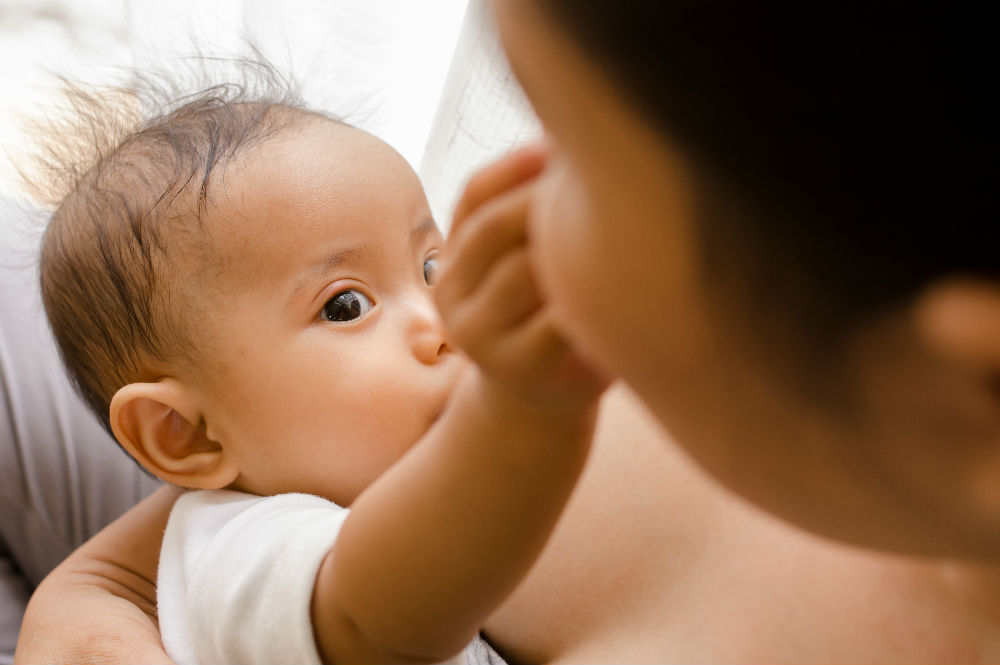Swelled with tear-filled eyes, all my patient could say was, “I had no idea this could even happen!” As she cuddled her three-week-old baby, she struggled to mentally prepare herself for surgery to drain an abscess in her breast. I promised I would share her story, and her regret of not seeking medical attention sooner.
Breast infection is common among breastfeeding women
According to a World Health Organization Study, mastitis, an infection of the breast tissue, occurs in up to 33 percent of lactating women. A breast abscess is an accumulation of pus in an area of the breast and frequently develops as a result of inadequately treated mastitis. Since 95 percent of mastitis cases occur in the first 12 weeks postpartum, let’s talk about the most common cause of mastitis, engorgement. A little breast fullness during the first few days after birth is normal, but excessive fullness, or engorgement, should be considered non-infectious mastitis and should be addressed immediately.
Engorgement occurs most of often three to five days after delivery, as a mother transitions from Lactogenesis Stage I to Stage 2, commonly referred to as the milk “coming in.” Here is a fun fact for you: The reason your breasts changed size during pregnancy is because the breasts start making breastmilk at 10 weeks pregnancy!
If you find yourself experiencing what I’ve described above, here are several proactive solutions:
Relieve pressure
If your breasts are engorged, you may have to take extra measures to relieve the pressure through extra feedings, applying a cold compress between feeds, warm compress before feeds, or using a breast pump. You can do a mixture of all solutions.
Stay hydrated
Fluid can accumulate in the breast from the intravenous fluids you receive during labor, and can cause swelling around the areola and nipple. You can usually tell if you have this issue if you can’t wear anything but sandals for the first few days after you deliver. The way to flush these extra fluids from your body is by urinating, and the way to urinate is by staying hydrated drinking water. Luckily oxytocin, the hormone you get when pumping or breastfeeding, makes you thirsty already so always have a full glass of water handy.
Call your health care provider
Contact your doctor or midwife right away. Staphylococcus aureus is the most common bacteria associated with mastitis. An increasing number of Staphylococcus aureus bacteria (staph) are resistant to certain antibiotics. Research shows Keflex or Bactrim are currently the preferred antibiotic for mastitis. It’s suspected that this S aureus is resistant to penicillin G, oxacillin, cefazolin, ciprofloxacin, amoxicillin/clanuvanate.
Seek breastfeeding help
Lactation Consultants can be found at www.ilca.org and can help with positioning and latch issues. Trained experts at my company Milkalicious can also assist. If one is not available and your baby is unable to latch, you can express your milk with a breast pump. Studies show that engorgement occurs less commonly when infants spend more time breastfeeding in the first 48 hours and when mother and infant are rooming in, so expressing milk often is proven to help with engorgement.
Milk stored in the breast for too long, no matter the amount, can run the risk of getting mastitis. Whether five days old, five months or even in the weening stage, the same rules apply. Stagnant milk is the source of the infection, and mastitis is much easier to treat in the early stages. Try to extract the milk on your own, and if you can’t, seek medical help as soon as possible.
